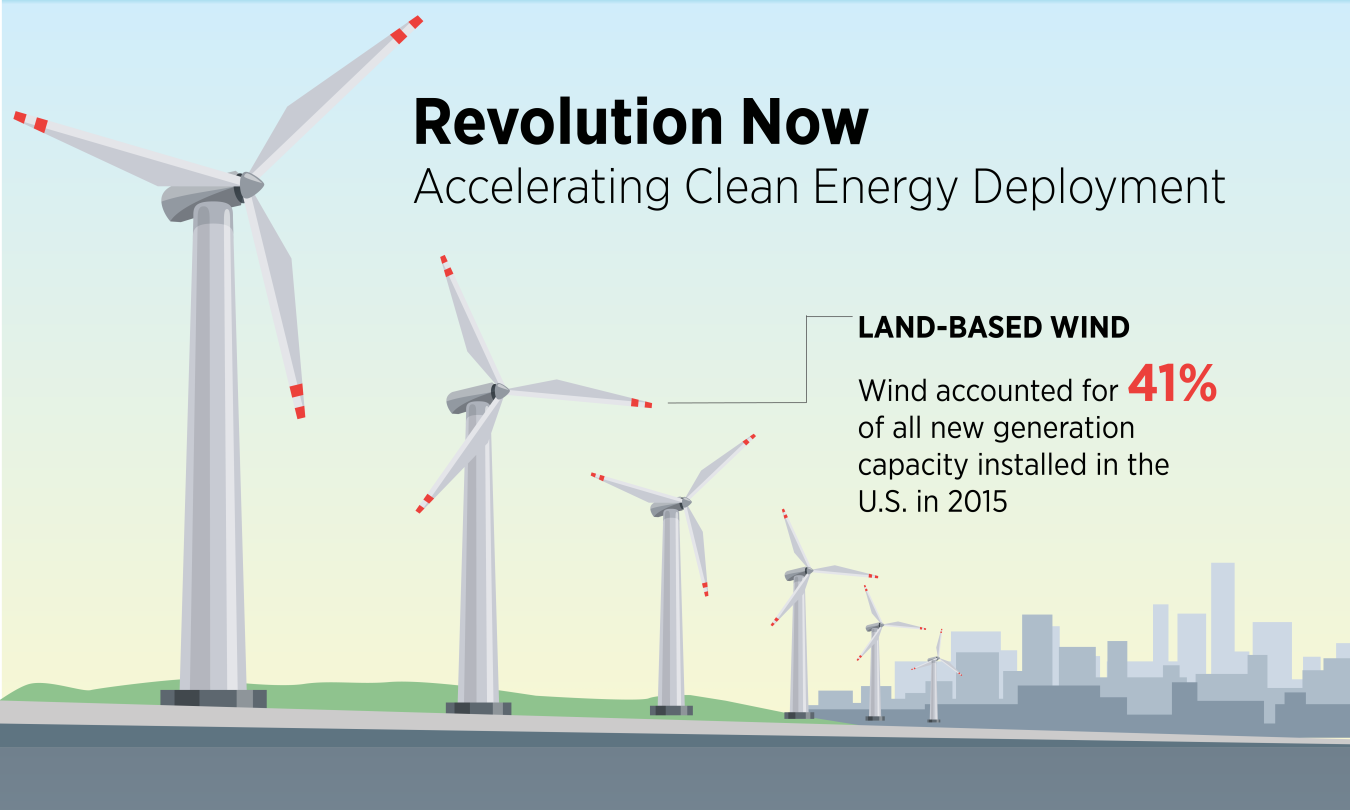As detailed in the recently released 2016 Revolution…Now report, the U.S. wind energy industry has forged a trajectory of sustained growth thanks to rapidly decreasing costs and increasing market demand. Let’s take a deeper dive to better understa...
Office of Energy Efficiency & Renewable Energy
October 7, 2016
As detailed in the recently released 2016 Revolution…Now report, the U.S. wind energy industry has forged a trajectory of sustained growth thanks to rapidly decreasing costs and increasing market demand.
Let’s take a deeper dive to better understand where we’ve been, where we are now, and where we’re headed in the near future.
1. The cost of land-based wind has dropped by 41% since 2008, and wind capacity has tripled in the same timeframe.
As you can see in the chart above, the cost of wind energy has decreased significantly in the past 35 years from more than 60 cents per kilowatt-hour (kWh) in 1980 to about 7 cents/kWh today, unsubsidized. Naturally, as wind energy has become less expensive, it has become an increasingly popular renewable energy option around the country. More than 35 years ago there was virtually no wind energy on the U.S. electric grid. Now, there is approximately 75 gigawatts (GW) of wind capacity in the United States. In the past seven years alone, wind power has tripled in capacity from 25 GW to 75 GW, providing more than 5% of our consumed energy.
2. Scaling up size to capture better wind.
Another trend driving growth in wind farm installations across America’s landscape is the increasing size of wind turbines. As developers deploy larger wind turbines, they are able to generate even more clean electric power by tapping higher quality, steadier winds, which in turn makes more areas in more states attractive for wind deployment. And turbines are slated to grow even taller in the future, so we’ve got nowhere to go but up!
Continued investments in key technology improvements such as taller turbines and longer blades have helped drive down costs and improve performance. For example, wind energy has yet to reach its potential in the southeastern United States. However, by utilizing taller towers and longer blades to extract more energy from stronger winds at higher elevations, we can unleash cost-effective deployment in more regions of the U.S, including the Southeast.
3. The future is here for offshore wind.
The oceans contain virtually unlimited potential for renewable energy. Following on examples from abroad, the United States now (as of October 2016) has wind turbines installed off the coast of Rhode Island. This 30-MW offshore wind farm—America’s first—is slated to be fully operational by the end of the year. Last month, we released the National Offshore Wind Strategy in conjunction with the U.S. Department of the Interior. The strategy document details how the wind industry can accelerate the responsible deployment of offshore wind energy in the United States.
In fact, Revolution…Now states that “the technical potential of offshore wind resources is enough to generate more electricity than twice what the U.S. generated from all sources of electricity in 2015.” While the domestic offshore wind industry still faces challenges, the potential of this technology to capture high quality wind resources close to coastal load centers makes it a key future source of clean electricity for the nation.
4. Wind has great future potential by 2050.
Wind still has massive untapped potential, as shown in a recent Energy Department report titled Wind Vision: A New Era for Wind Power in the United States, which outlines how wind energy could generate 20% of the nation’s electricity by 2030 and 35% by 2050. Industry observers expect technological advancements to continue to drive down costs in the future. In fact, a recent survey of wind experts indicated that wind energy costs could fall another 35% by 2050. With continuous technological innovation, transmission expansion, and continued federal and state support, wind can continue to grow and unlock its wide array of benefits in all 50 states.
Learn more about our Wind Energy Technologies Office’s efforts to increase wind deployment and read the Revolution…Now report.





